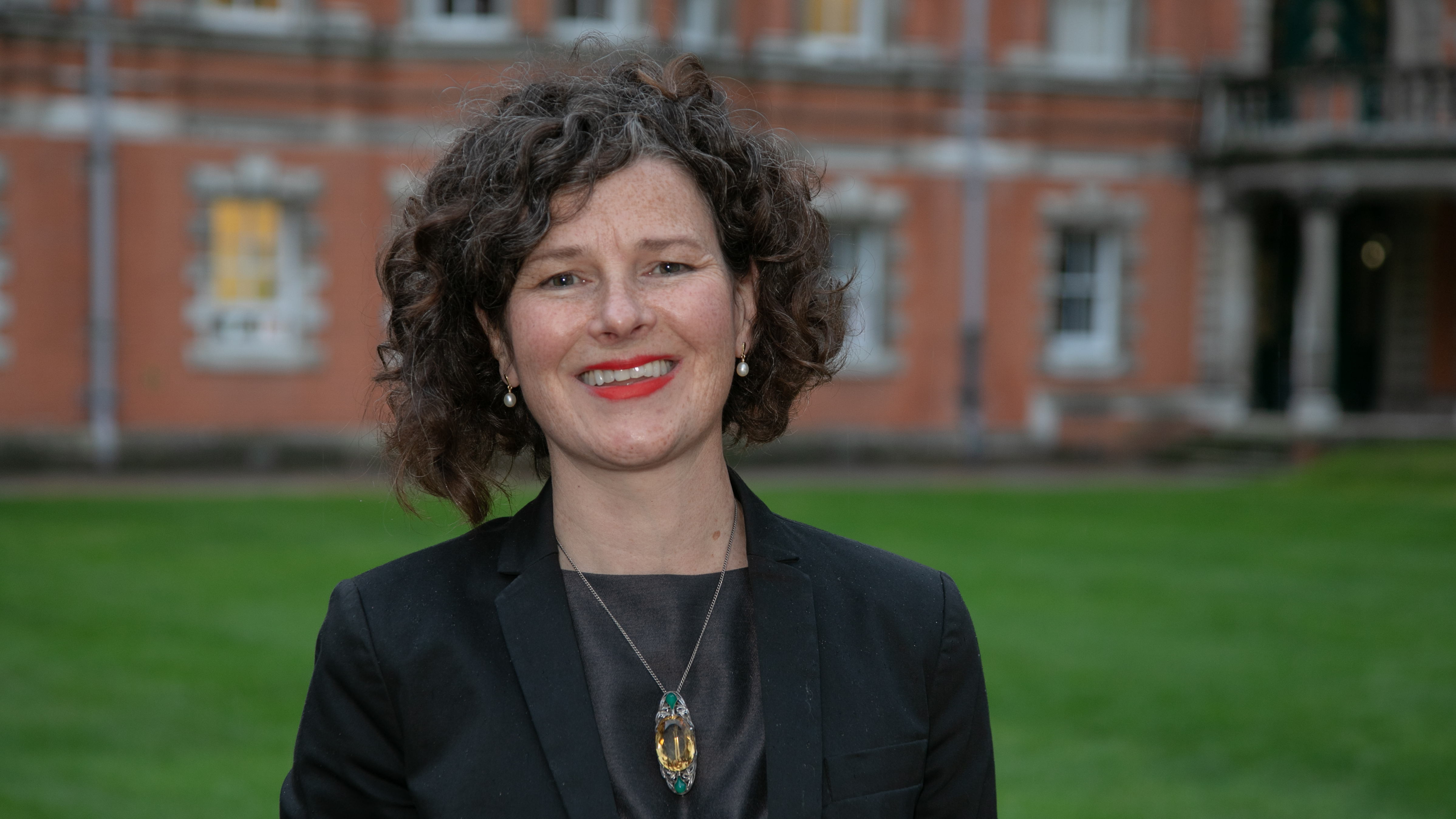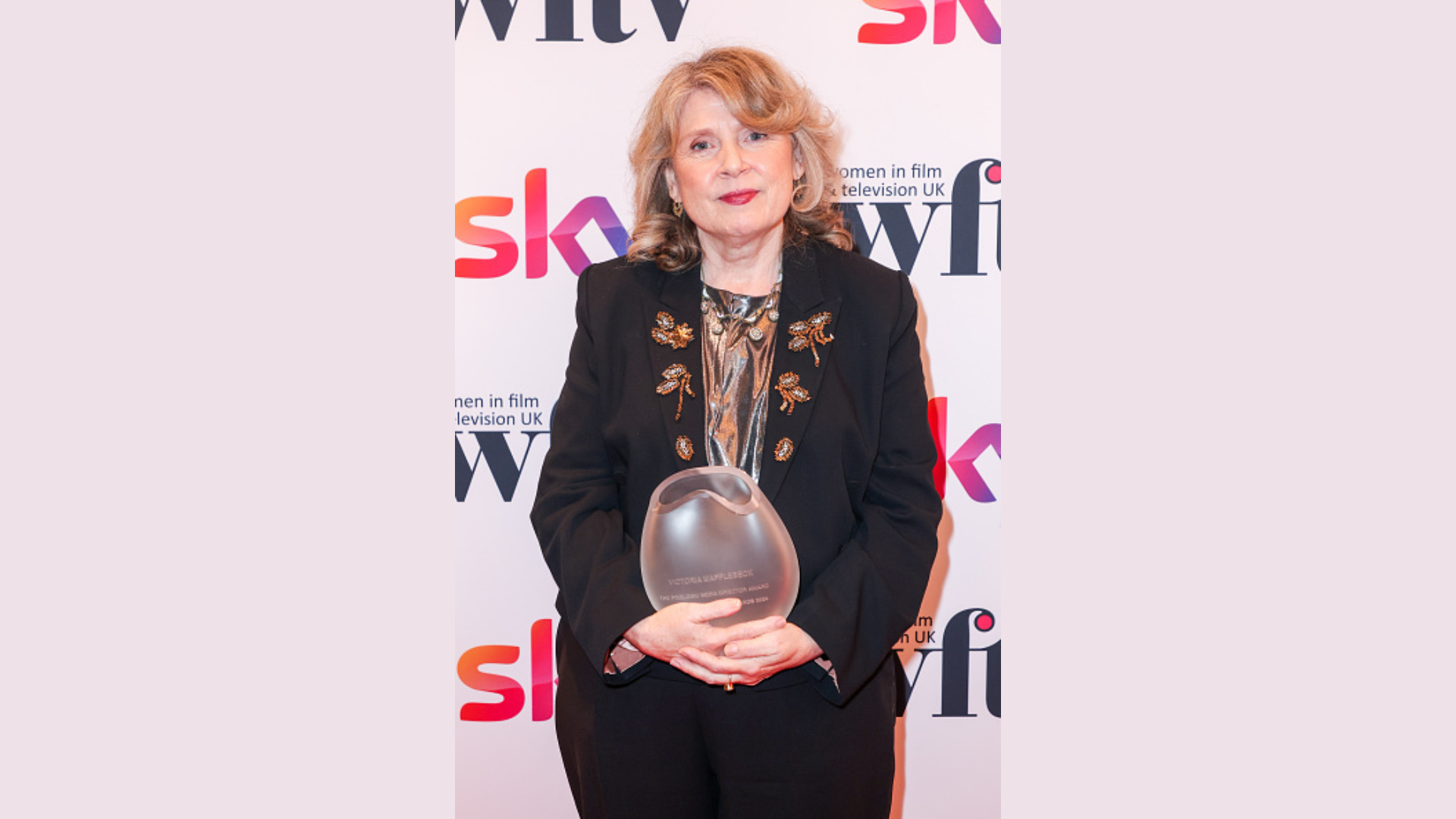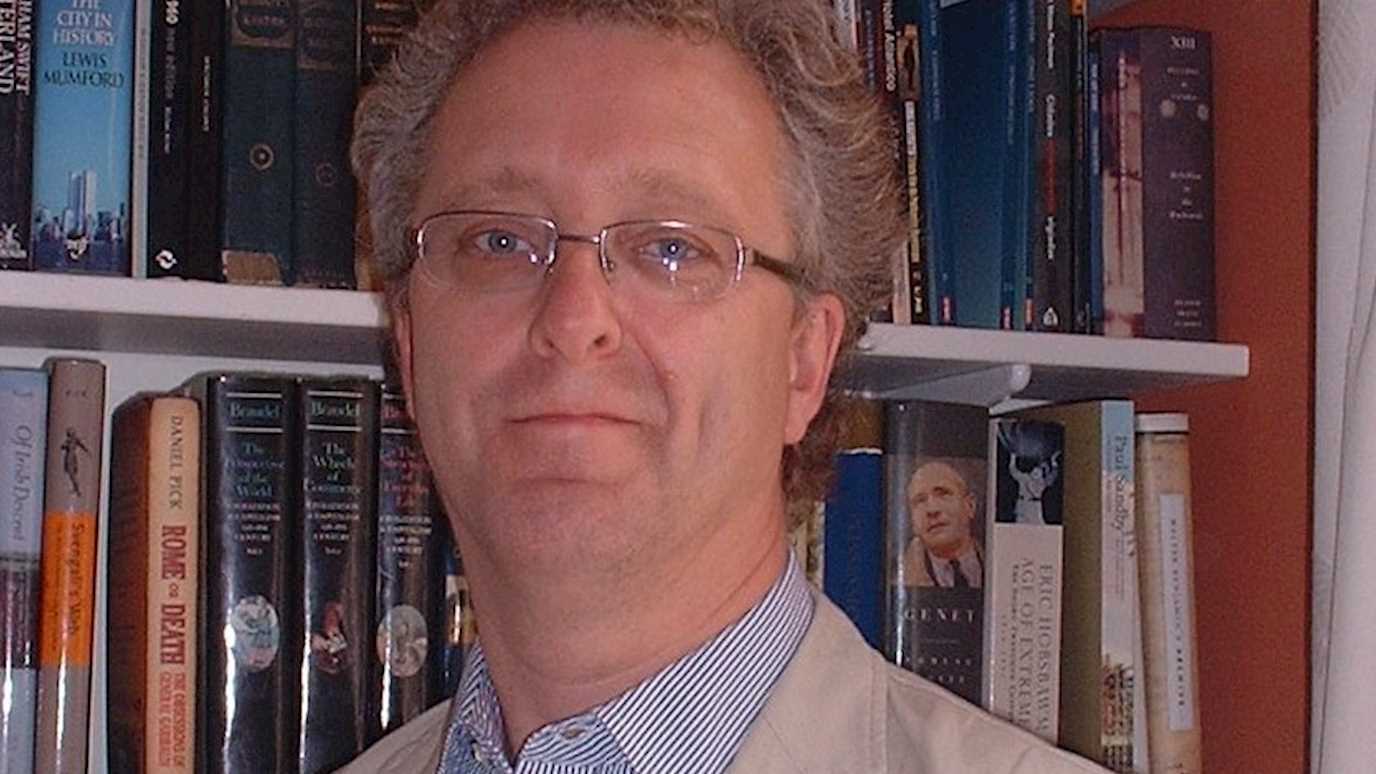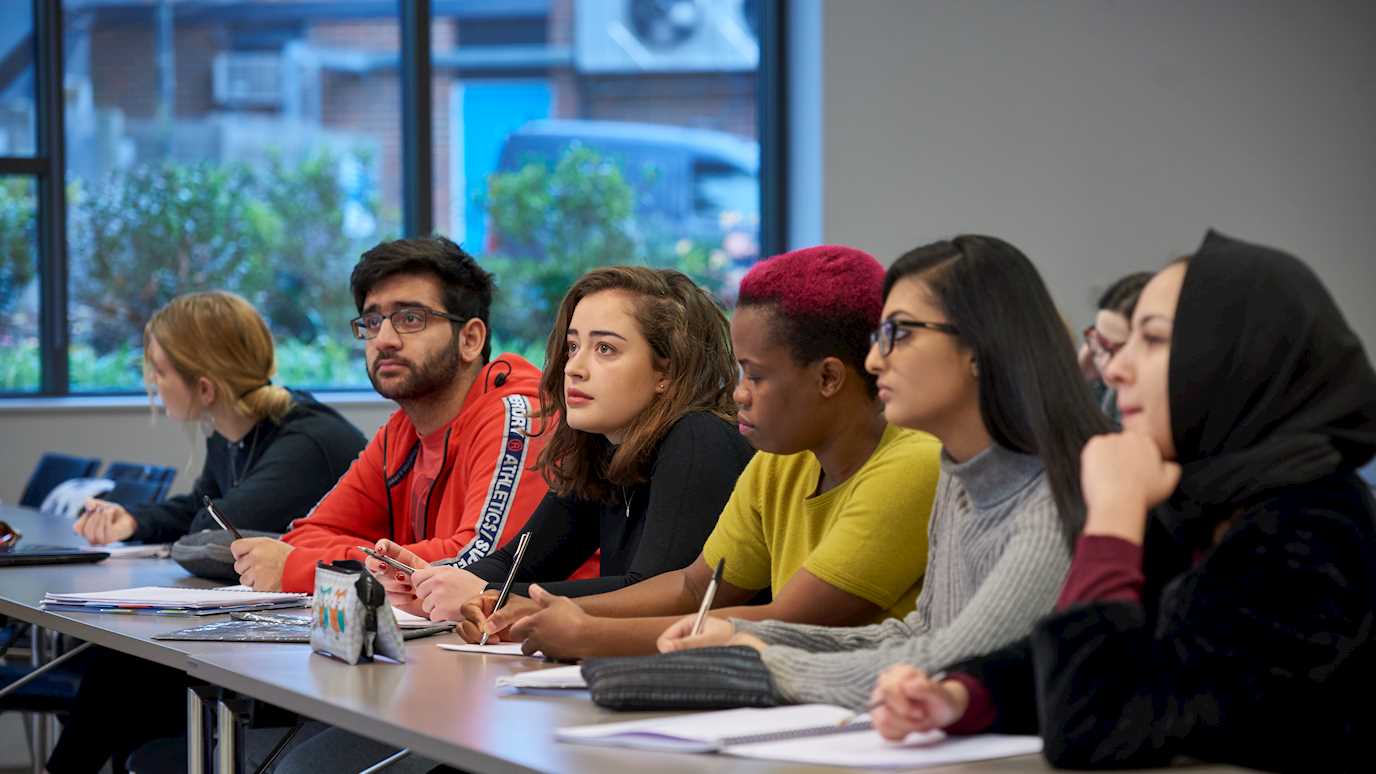Rock legend and astrophysicist, Dr Brian May, gave a presentation at Royal Holloway on November 14, about his collection of remarkable stereoscopic photographs.
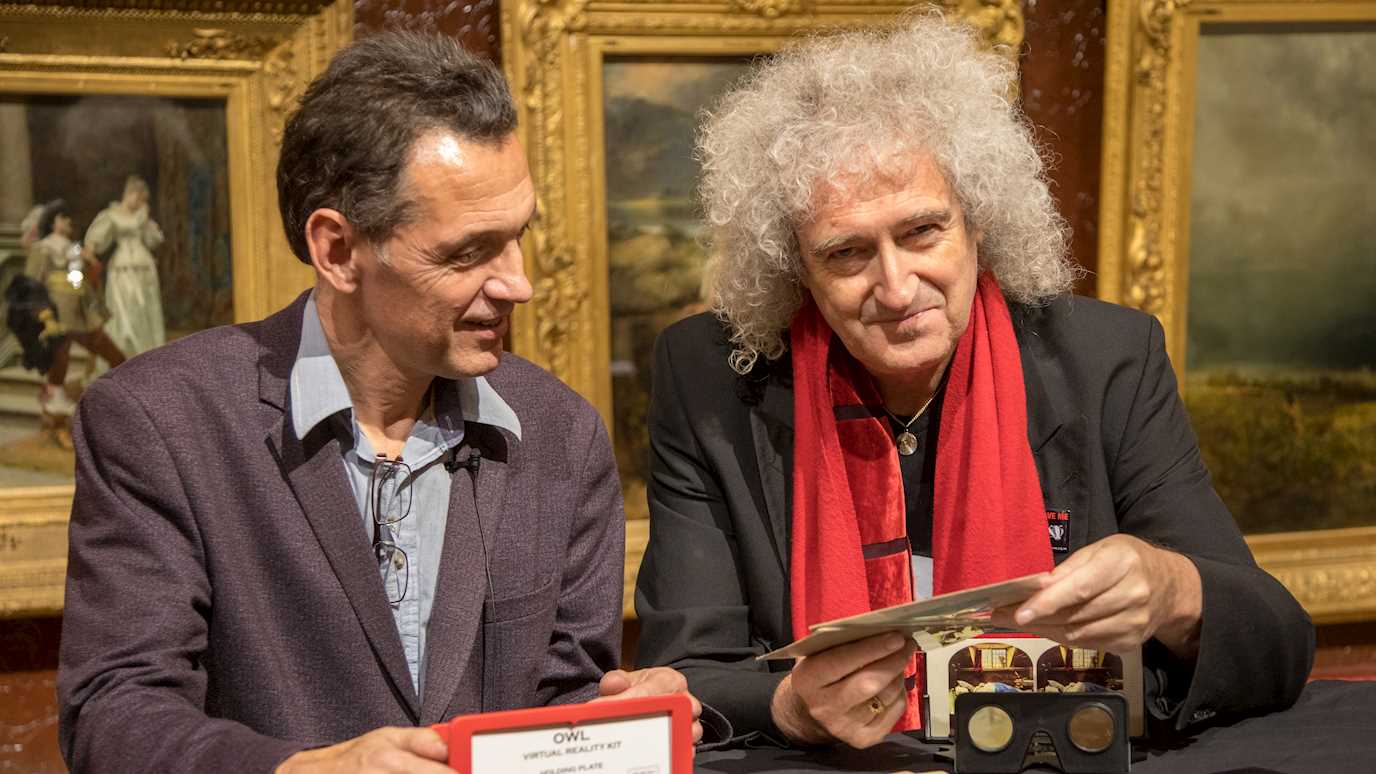
Denis Pellerin and Dr Brian May
Together with photohistorian, Denis Pellerin, one of the world’s experts on French and English Photographic History, Dr May gave the 3-D presentation using his collection and examples borrowed from the collections at Royal Holloway Picture Gallery.
The talk explored the multiple, but rarely mentioned, connections between painting and stereo photography in the Victorian era and the audience had to wear cutting edge stereoscopic glasses to bring the images to life.
Stereo photography is where two flat images are put together in a special viewer to produce a scene in 3-D and was all the rage in the Victorian era.
Brian May’s introduction to stereoscopy was as a child finding 3-D cards in his breakfast cereal.
In the 1950s Weetabix gave away free coloured stereo cards in their packets, along with an opportunity to send off one-and-sixpence for the stereoscope required to view them.
Brian, discovering that he could free-view them without the viewer too, was entranced, and quickly figured out how to make his own stereo views, and was hooked for life.
Scouring Portobello Road market for stereoscopic items some years later, Brian discovered the intriguing Diableries cards, which stirred a special passion, which was to lead to the Diableries book 40 years later.
While studying Astronomy at Imperial College, Brian became a regular viewer at Christie’s photographic auctions, at the time a rich source of long forgotten stereo views from the 1850s onwards which were turning up in people’s attics.
In 2008, Brian realised his dream of recreating The London Stereoscopic Company, its aim to bring the magic of true stereoscopy to the modern world. In order to share Victorian 3-D, Brian designed his own OWL stereoscope, which is now produced in large quantities.
The OWL has become a new standard around the world in stereoscopic viewing.
Then in 2011 Brian met a redoubtable French scholar, Denis Pellerin. Their two passions connected immediately, and Denis became Brian’s curator, conservator, researcher, and co-author.










